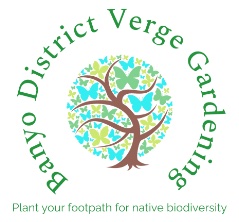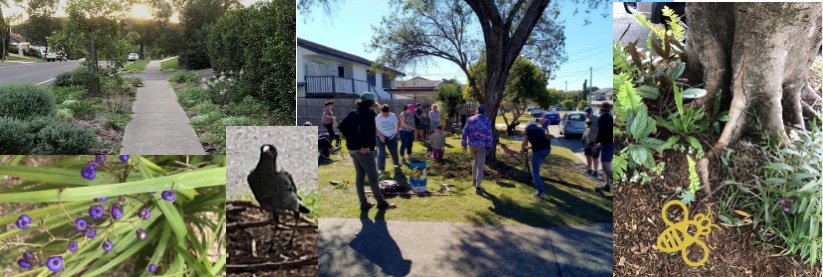This is the first planting bee for the beds created by Nundah Community Enterprises Co-operative (NCEC)‘s youth co op members.

We plant native tubestock for several reasons.
- It’s less digging
- It’s cheaper so not such a disaster if some get trampled, squashed by a ball, or die for any reason.
- These plants aren’t tempting to plant thieves.
- It adds to the interest watching them grow.
Plants used include:
- Westringia
- Dianella brevipendunctulata
- Myoporum boninense ssp.australe Extremely tough – so tough you sometimes see this on median strips. Tiny white flowers and red berries for the birds and lizards. Sprawls, trim to any shape or to keep compact.
- Chrysocephalum apiculatum (Yellow Buttons)
- Hibbertia scandens

We’ve put in some paper daisy seedlings at the front for an added pop of joy when people come out of the gate, or approach from the laneway opposite. The paper daisy plants will also fill the space quickly while the long-term plant grow. The children of the house will need to water them daily while they get established.
Clearing up and watering

Final watering at the end. One of the reasons for residents planting their own verge is access to water. Even though we plant native plants suited to the soil and climate, they need water while they get established.
Because this is a public space, it is essential that you take away all your stuff at the end of a working bee. No tools, plant pots, etc should be left in the space between sessions.
Learn more about our method of verge gardening
Our method of working with nature means an incremental building of biodiversity. That also gives time for getting to know the space, lots of conversations, and learning about gardening and the plants.
It means neighbours have time to get curious, ask questions, and be reassured that you aren’t appropriating public land for your own use or turning it into a community food garden.
What’s next for this garden
- Nundah Community Enterprises Co-operative (NCEC)‘s youth co op members will be back to clear the grass up to the fence at the far end, and do some planting
- The children of the house will water the plants while they settle in.
- By summer, these tiny plants will have grown and will start filling the space.
- As the plants grow the children can monitor the bees, butterflies and other creatures that are attracted by the plants.
Many thanks to all who came today, and ACF Community Brisbane Northside group for ongoing organisation of the working bees.

